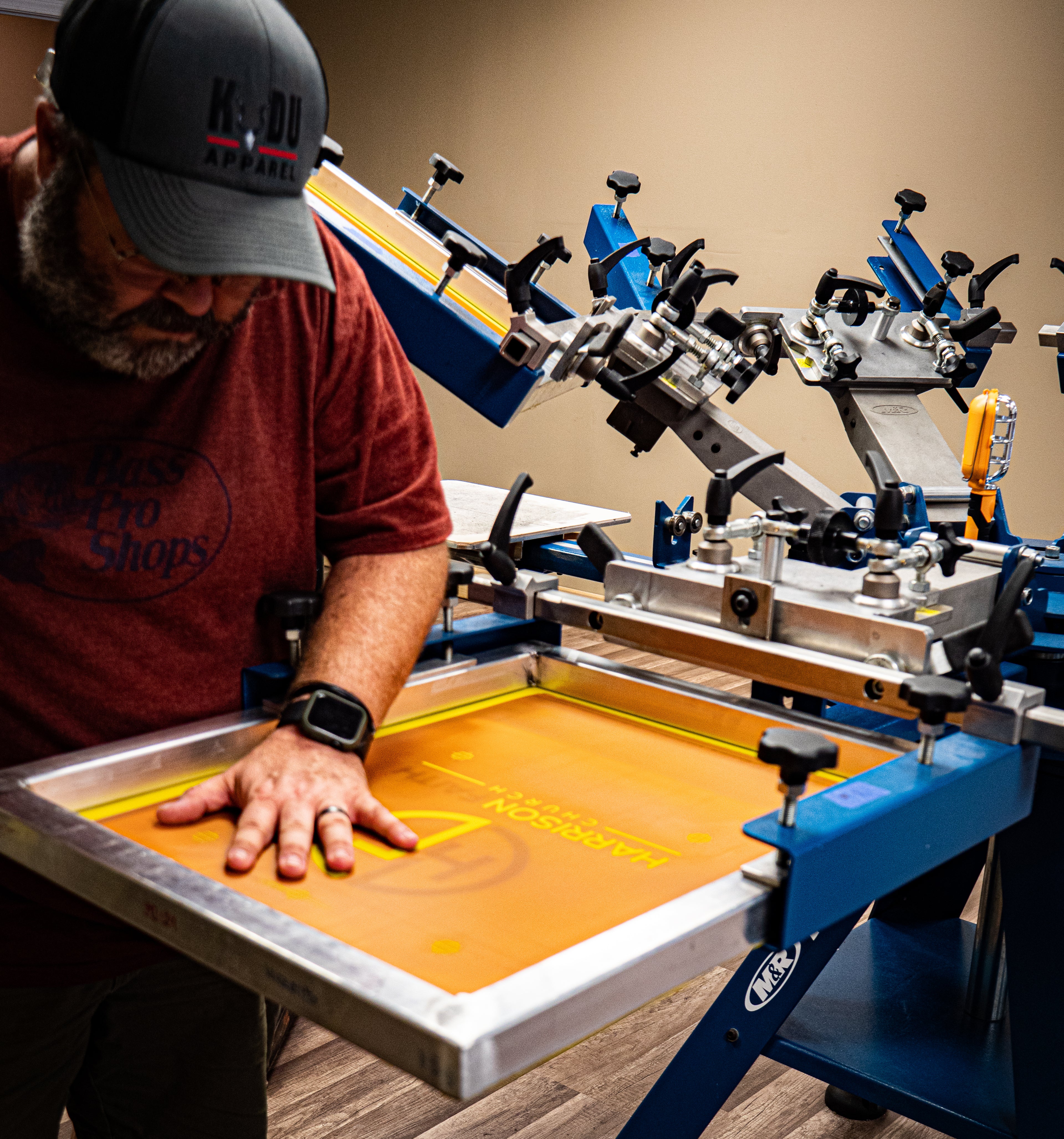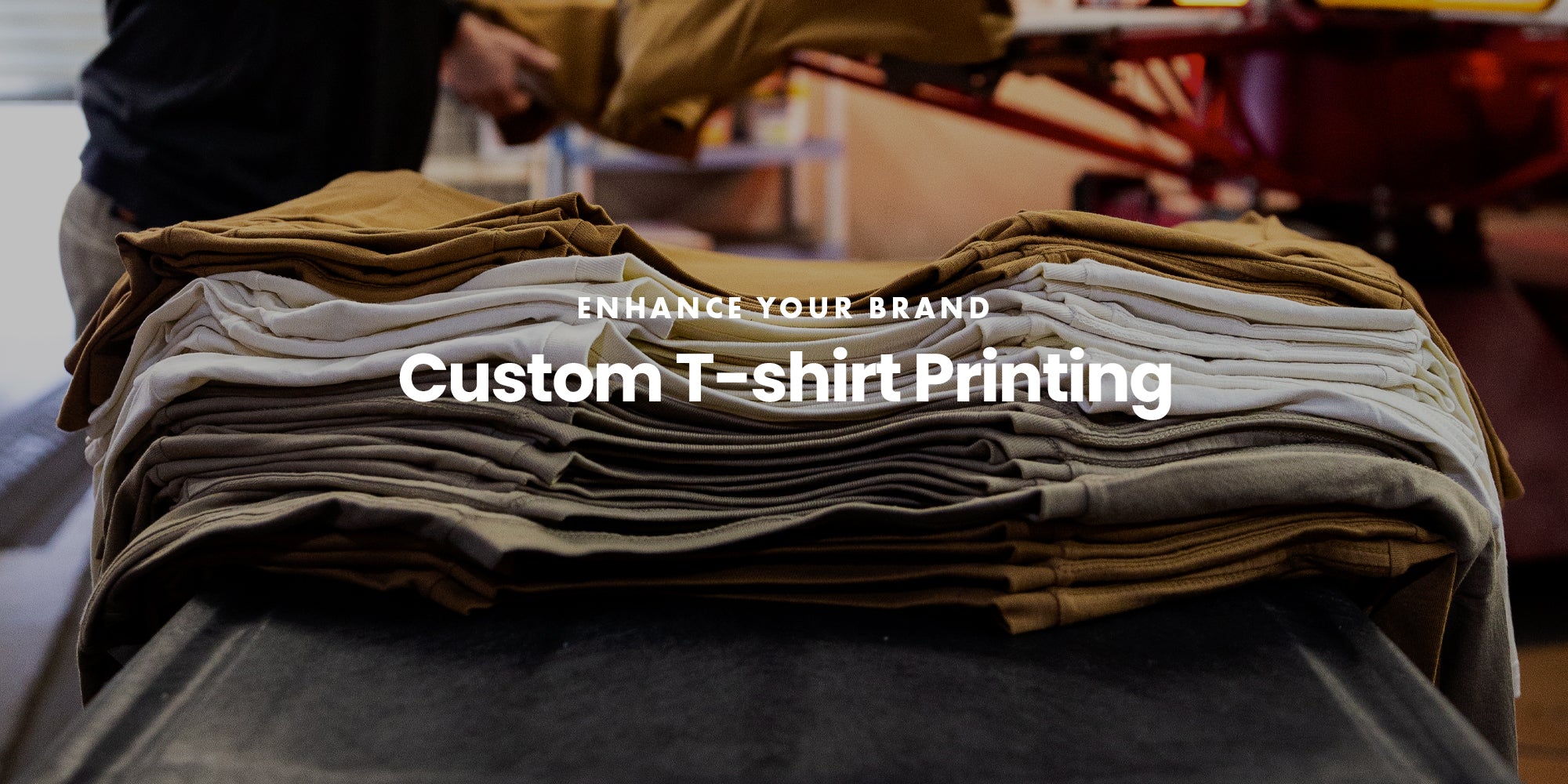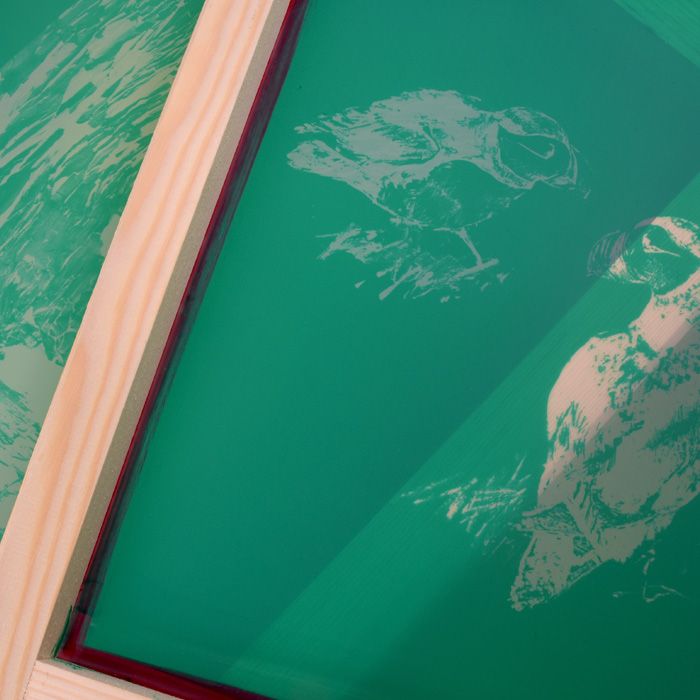Affordable Custom Screen Printing Services for Small Businesses
Wiki Article
Screen Printing Uncovered: Every Little Thing You Required to Learn About Tee Shirt and Garment Printing Methods
Display printing is a fascinating method that combines art with strategy, providing countless opportunities for creative thinking. All set to check out the essential aspects that make display publishing an art type?
The Essentials of Display Printing: Just How It Works
When you plunge right into screen printing, you'll uncover it's both a science and an art. At its core, display printing involves developing a stencil, or display, that allows ink to pass with just in certain areas.Following, you'll mix your inks and prepare your printing surface area. Placement the display over the textile, then make use of a squeegee to push ink with the display onto the garment. This procedure calls for precision, as you desire clear, vibrant prints. After printing, you'll treat the ink with warmth, ensuring it sticks to the material and lasts via cleans. Each action is crucial, and grasping them will raise your screen printing abilities, transforming easy garments right into one-of-a-kind, expressive items.
Sorts Of Screen Printing Methods
As soon as you understand the essentials of display printing, it's time to explore the different strategies that can raise your designs. One prominent technique is typical display printing, where ink is pressed through a stenciled screen. This strategy is great for vibrant, vibrant shades. Then there's water-based ink printing, which uses a softer feeling and is environmentally friendly, however it calls for a various method to healing.One more choice is plastisol printing, known for its durability and vivid colors, making it a preferred for lots of brand names. Experiment with halftone printing to produce slope effects and detailed layouts.
Essential Devices for Display Printing
To attain spectacular results in screen printing, having the right tools is essential. You'll need a durable screen printing framework, which holds the mesh that moves your design onto the garment. Next, invest in high-grade squeegees; these are crucial for applying ink uniformly throughout the display.Selecting the Right Inks and Materials
When choosing inks and materials for screen printing, you need to take into consideration the kind of ink that functions best for your task. Believe regarding fabric compatibility to guarantee your layouts look last and terrific lengthy. Additionally, check out eco-friendly ink choices to make your printing process much more sustainable.Sorts Of Display Inks
Picking the ideal screen ink is crucial for achieving dynamic, sturdy prints that meet your task's needs. There are several kinds of display inks to examine. Specialized inks, such as metallic or glow-in-the-dark, can add special effects to your designs.
Textile Compatibility Factors To Consider
Understanding fabric compatibility is vital for attaining high-grade display prints, particularly considering that various materials respond uniquely to various inks. When choosing inks, think about the textile type-- cotton, polyester, or blends. For cotton, water-based inks work well, supplying softness and breathability. Polyester, on the other hand, often requires plastisol inks for better bond and dynamic shades. If you're printing on blends, you might need to use a combination of both types. Always examine your inks on example material to assure they adhere correctly and preserve shade stability. Furthermore, keep in mind that textile weight and structure can influence the last outcome, so choosing the right ink and product combo is vital for your task's success.Eco-Friendly Ink Options
Eco-friendly inks are becoming a prominent choice for screen printers that desire to reduce their ecological impact while keeping quality. When selecting inks, take into consideration water-based inks, which are less harmful and simpler to tidy up contrasted to traditional solvents. These inks bond well with materials, providing vivid results without harmful chemicals. You could additionally explore eco-solvent inks that make use of fewer volatile natural compounds (VOCs), making them a safer alternative for both your health and the earth.Additionally, search for inks made from renewable sources, such as soy or vegetable-based choices. By selecting the best inks and materials, you'll not only create spectacular designs but likewise add to an extra sustainable printing process. Make the switch, and your prints will certainly reflect your dedication to the environment!
Preparing Your Layout for Display Printing

File Style Requirements
To ensure your layout looks sharp and dynamic on material, you'll need to pay attention to file format requirements for display printing. Beginning with vector files like AI or EPS, as they can be scaled without shedding top quality. If you use raster pictures, choose high-resolution documents, such as TIFF or PNG, ideally at 300 DPI. Prevent utilizing JPEGs, as they can shed clearness when resized. Make certain your style has a clear history to prevent undesirable white sides on your prints. Maintain color modes in mind; CMYK is standard for screen printing, so transform your RGB designs appropriately - screen printing kit. By following these guidelines, you'll establish your art work up for a successful print.Color Splitting Up Strategies
Color splitting up is an important action in preparing your design for display printing, and understanding it can significantly boost your print top quality. You'll need to break your design right into specific colors, as each color calls for a different display throughout printing. Begin by recognizing all the shades in your style and produce layers for each one. You can use software application like Adobe Photoshop or Illustrator to separate and different colors successfully. Be particular to save each layer as a separate file, normally in a format like TIFF or PSD. This precision not just ensures precise color representation however also simplifies the printing process. By taking note of color splitting up, you'll achieve dynamic and professional lead to your screen-printed garments.Resolution and Size
Attaining the finest results in screen printing starts with guaranteeing your style has the best resolution and dimension. Ideally, your art work ought to be at least 300 DPI (dots per inch) for sharp, clear prints. If you utilize reduced resolution, your end product might look amateur and pixelated.When it concerns dimension, take into consideration the dimensions of your print area. Layout your artwork to match the final print dimension, preferably creating it in the real measurements you'll be printing. In this manner, you'll avoid any unexpected scaling issues.
Always inspect your style in both vector and raster formats. Vector graphics can be scaled without losing top quality, making them suitable for display printing. Preparing properly will assure your design looks impressive on every garment!
Step-by-Step Screen Printing Refine
Screen printing is a vibrant procedure that permits you to create dynamic styles on numerous surfaces. To get started, you'll need a display, solution, and your picked ink.After rinsing the unexposed solution, your display prepares. Set it up on your printing surface and straighten your garment underneath it. Put ink onto the screen and use a squeegee to push the ink via the pattern onto the fabric. Lift the display very carefully and allow the print dry. Ultimately, cure the ink making use of heat to assure sturdiness. That's it! You've successfully screen published your layout.
Tips for Successful Screen Printing Projects
While you're diving right into your display printing projects, keep in mind that prep work is key to success. Start by gathering all your materials-- inks, squeegees, screens, and garments. A clean workspace helps avoid unwanted errors, so clean up prior to you start.Next, confirm your art work is high-resolution and correctly sized for your garment. Test your display for appropriate exposure and clean it thoroughly to prevent spots. When blending your inks, follow the manufacturer's guidelines to attain the ideal consistency.
During printing, use also pressure with your squeegee for constant outcomes. Don't rush; take your time to garment printing validate each print satisfies your criteria. After printing, let your garments completely dry totally before handling or packaging them.
Finally, constantly keep an example of your help future referral. By doing this, you can assess your progress and enhance your techniques gradually. Happy printing!

Regularly Asked Inquiries
How much time Does It Take to Establish a Screen Printing Job?
Establishing a display printing work normally takes about thirty minutes to an hour. You'll prepare the screens, mix inks, and adjust the press. The moment differs based upon intricacy and experience, so stay arranged!Can I Publish on Different Textile Enters Utilizing the Exact Same Strategy?
Yes, you can print on various textile kinds utilizing the very same technique, yet you'll need to adjust your setups and inks. Some textiles soak up ink in a different way, so experimenting warranties the very best outcomes for each and every material.What Are Common Blunders to Prevent in Screen Printing?
When screen printing, avoid usual mistakes like utilizing the wrong ink, overlooking proper direct exposure times, or missing pre-press checks. Always test your setup and preserve clean displays to assure high quality outcomes each time.Exactly How Can I Effectively Tidy and Maintain My Display Printing Tools?
To effectively clean and keep your screen printing tools, you ought to consistently wash screens with ideal solvents, examine squeegees for wear, and guarantee all devices are saved completely dry and dust-free. Uniformity stops pricey repairs and improves efficiency.Is Display Printing Eco Friendly Compared to Various Other Techniques?
Display printing can be much more environmentally pleasant than other methods, especially if you make use of water-based inks and eco-conscious materials. By picking lasting products and techniques, you minimize waste and decrease your impact on the world.Display Printing Uncovered: Every Little Thing You Need to Know Regarding T-Shirt and Garment Printing Strategies
At its core, screen printing entails producing a pattern, or display, that permits ink to pass via just in particular areas. Setting the display over the fabric, then make use of a squeegee to push ink via the display onto the garment. One preferred approach is traditional display printing, where ink is pressed via a stenciled display.When selecting inks and materials for display printing, you need to take right into account the kind of ink that works ideal for your project.
Report this wiki page